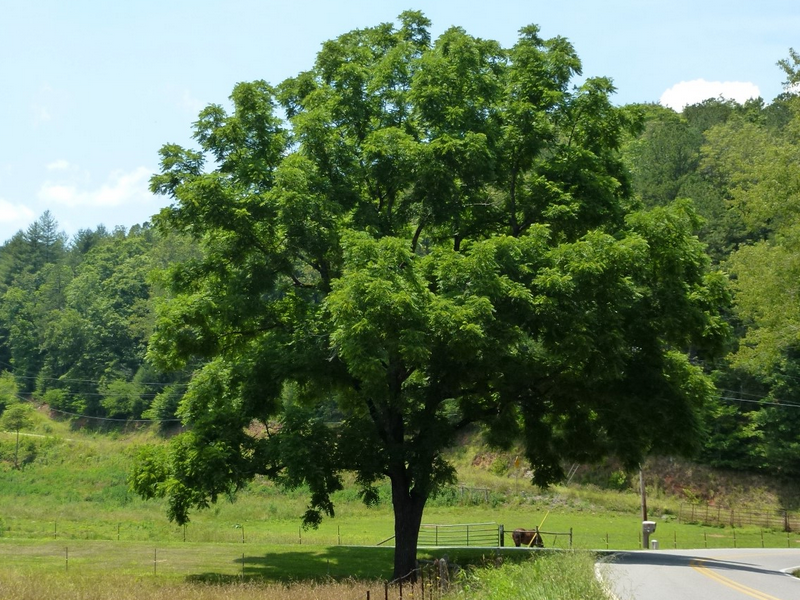Black Walnet Tree
Juglans nigra
Click here to download a PDF of this plant information page (for printing).

Sun Exposure: Full Sun, Part Shade
Season of Interest: Summer, Fall
Bloom Time: April
Bloom Color: Gold (catkin)
Height: 50 to 75 ft.
Spread: 50 to 70 ft.
Spacing: 55 ft.
Water Needs: Average
Maintenance: Prune for shape when young
Soil Type: Clay, Loam, Sandy
Soil pH: Acidic, Neutral
Soil Drainage: Well drained
Pests: Squirrels eat the nuts
Diseases: Thousand canker disease
Wildlife: Birds, Small mammals

Description:
The black walnut tree is a native hardwood tree that is often planted in large-scale landscapes and valued for its edible nuts and large size. The tree is a sought after for many reasons. Its large, mature size and canopy make it a desirable shade tree and the tree is also prized for its beautiful, densely grained wood used for woodworking projects, such as furniture and cabinetmaking.
As a native tree, black walnuts provide food and shelter for wildlife. The primary beneficiaries of the nuts are squirrels. The eastern fox squirrel gets 10 percent of its food from black walnuts. Black walnut trees are also the preferred host of the Luna moth, an elusive large moth, and the regal moth, which are both native to North America.2 The eastern screech owl roosts on the limbs of black walnut trees. The black walnut tree often causes problems for home gardeners because the tree is allelopathic—it produces juglone, a chemical that inhibits the growth of other plant species in its vicinity. Not all plants are sensitive to juglone, including dogwood, juniper, clematis, and daffodils. Many other trees, vines, shrubs, ground covers, annuals, and perennials can grow in close proximity to a black walnut tree. For more information see:
plants.ces.ncsu.edu/plants/juglans-nigra
Care and Growing Tips:
The tree can be planted in the spring or fall. It grows fairly slowly, adding less than 12 inches per year. It can live up to 75 years. Black walnut trees grow in both hot and humid as well as cold and dry regions. These trees are sensitive to soil conditions and they do best in fertile, well-drained, neutral soil that's kept moist. They do not tolerate shade well and thrive in full sun conditions.